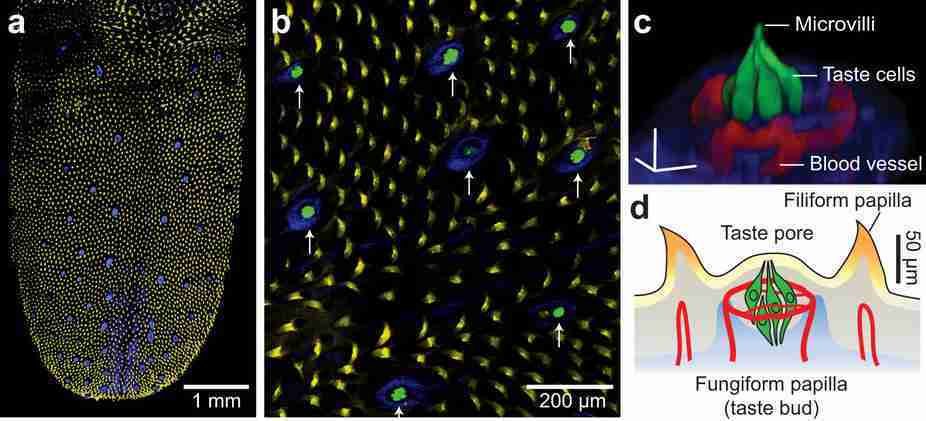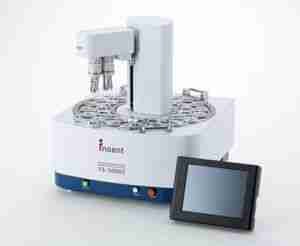Electronic Tongue
WARNING: Not to french kiss.
Read in [est_time]
Taste results from the stimulation of the taste buds, that detect the five basic flavours (sweet, bitter, salty, sour and umami). That same stimulus, as well as smell, is conducted to the brain where a particular taste is formed. This is certainly not a solely human feature, as many other animals also possess taste buds. The most acceptable evolutionary purpose for the existence of taste buds is that of providing immediate information as to the nutritional composition of a food, and if its consumption may result in poisoning. On the other hand, taste buds are now also useful for giving out Michelin stars.

In this context we are now going to present you with a magnificent product – picture this in a As Seen On TV mode – which may certainly add to the way in which we understand flavour. Although the electronic tongue does not possess taste buds, it can do as great as a job (or even better) than its human counterparts.
Known as the electronic tongue, or e-tongue, you’ll have a hard time figuring out any visual similarities regarding a regular old tongue. This apparatus is made up of a series of lipid-coated membranes that are connected to an electrode. When this membrane is dipped into a liquid matrix (such as liquid food), it will measure conductivity, which will allow it to assess information regarding acidity, saltiness, etc.
In spite of the fact that each of the electronic tongue’s sensors put out pretty simple information, it is from the conjugation of all the sensors that a highly complete information about the food is constructed, to such an extent that it is possible to create a digital fingerprint regarding each food [2].


It is indeed curious that the electronic tongue was created before we truly found out how stimuli reception goes about on our taste buds.
For a more thorough analysis of food flavour, it is possible to pair the e-tongue with a similar equipment, the electronic nose! Just as our nose, the electronic nose detects the volatile components of food, which is generally associated to aromatic compounds, that influence our perception of flavour. Remember those days when you have a cold and everything tastes like wet paper? That’s it.
So what is the e-tongue used for?
Having applications in food control, as well as in the development of food products, this apparatus is in no way picky and will taste just about everything. The electronic tongue is also useful to ameliorate the final flavour of medications (please correct those that still taste like rat poison), a job that would otherwise have to be done by a panel of human tasters, which could possibly lead to several health risks. Furthermore, there are also applications in the monitoring of water samples, detection of pollutants and non-invasive diagnosis [3,4].
Regarding food, strictly speaking, beverages and liquid foods have been the most scrutinized by the electronic tongue. The e-tongue has been showcased as a tool for identifying food falsifications, either by the use of forbidden ingredients as well as by controlling foods with protected origin, where the thorough listing of all components is needed. Surprisingly, the electronic tongue can also execute tasks such as identifying the age of different wines, such as Port and Madeira, a feat only believed to be possible by highly specialized and experienced wine tasters. In this field, it is also useful in the monitoring of the ageing processes of cheese and whiskeys.
The electronic tongue is not quite a cooking utensil, but with such a refined palate it might even become one.
References
[1] Choi, Myunghwan, Woei Ming Lee, and Seok Hyun Yun. “Intravital Microscopic Interrogation of Peripheral Taste Sensation.” Scientific Reports 5 (2015).
[2] Tahara, Yusuke, and Kiyoshi Toko. “Electronic tongues–A review.” IEEE Sensors Journal 13.8 (2013): 3001-3011.
[3] Ramamoorthy, H. Vignesh, S. Natheem Mohamed, and D. Suganya Devi. “E-Nose and E-Tongue: Applications and Advances in Sensor Technology.” Journal of NanoScience and NanoTechnology 2.1 (2014): 370-376.
[4] Campos, Inmaculada, et al. “A voltammetric electronic tongue as tool for water quality monitoring in wastewater treatment plants.” Water Research 46.8 (2012): 2605-2614.

